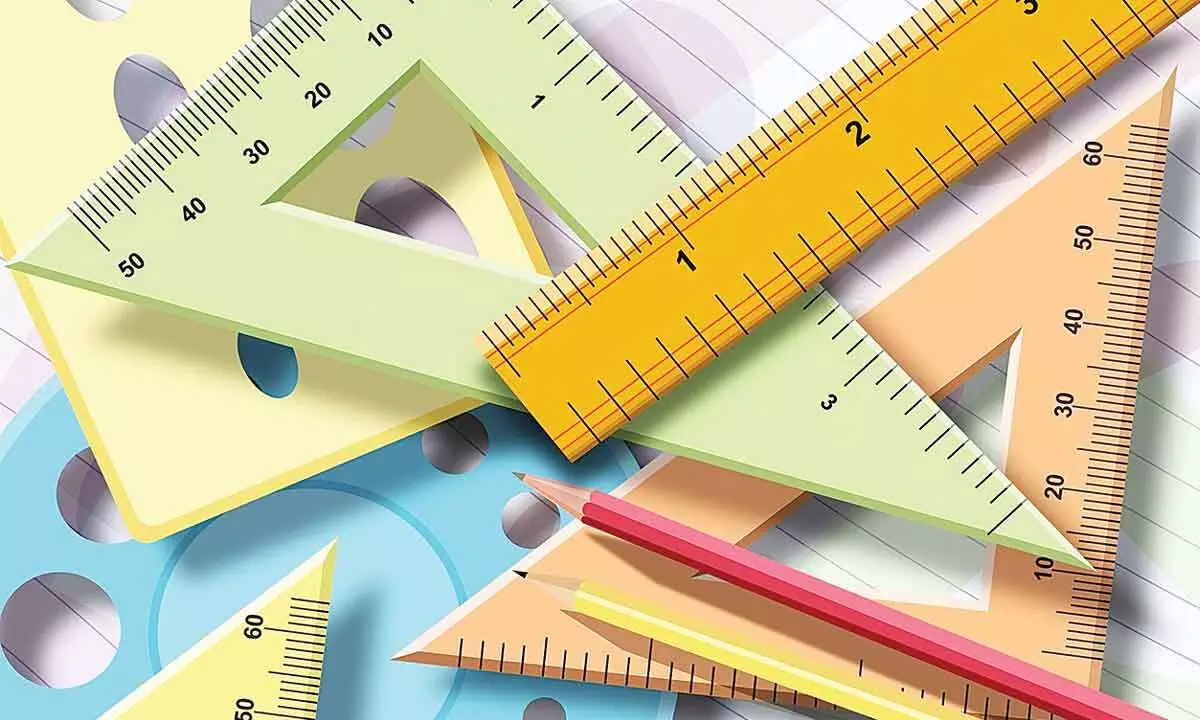Live
- Grand Celebration of the 18th Mahapadi Puja held at Shamshabad Ayyappa Temple
- MLA Sri Ganesh distributes cheques to beneficiaries under CMRF
- BGT: Do feel for Nathan, but totally understand why Australia dropped him, says Vaughan
- PM Modi accorded Guard of Honour at Kuwait's Bayan Palace
- Sports Minister flags off ‘Fit India Sundays on Cycle' initiative
- Brunei cracks down on activities of international drug cartel
- Peace and development in Tripura, says HM Shah after meeting Reang tribals
- Two terror associates arrested with arms, ammunition in J&K’s Sopore
- L-G Saxena visits Delhi areas, says people's plight pathetic
- As temperatures drop to minus 8 in Kashmir, CM Omar Abdullah rushes back
Just In

It is believed that what we learn depends on how we learn. Students learn best when the teaching methodology and pedagogy are student-centric and when they are an active part of the process.
It is believed that what we learn depends on how we learn. Students learn best when the teaching methodology and pedagogy are student-centric and when they are an active part of the process. Hence, structuring teaching programs to equip students with 21st-century skills along with the required content knowledge is vital.
Use of Singapore Math Approach (a method focused on mastery, which is achieved through intentional sequencing of concepts) in teaching Math at the primary and middle school level is found to be effective. This teaching methodology is originally developed by Singapore's Ministry of Education for Singapore public schools. The method has been widely adopted in various forms around the world. It is a teaching method based on the national mathematics curriculum used for kindergarten through sixth grade.
Through this approach, students can develop critical thinking and mathematical mastery of their work. At the crux of this methodology is the Concrete-Pictorial-Abstract learning method (C-P-A) in which lessons are taught through scaffolding and students learn how to solve problems with perseverance. This method also enables teachers to convey math concepts progressively from introduction to understanding to fluency. It is where content meets pedagogy. Through this, student performance can be raised to the expected international levels.
How does this approach help students?
Math, for the most part, has been memorizing some steps and procedures again and again. To make it challenging, the numbers were made bigger. The bigger the numbers, the higher the challenge was the rationale given. That mindset has now changed. We now believe that this is not challenging, instead, it is just tedious. Singapore Math focuses on the Concrete – Pictorial – Abstract approach. This makes it easier to link ideas to the concepts.
♦ In the lower grades, students use manipulatives (which can be everyday objects like paper clips, popsicle sticks, toy cubes, etc) to build on their concepts.
♦ Students from number bonds in their minds to perform basic addition and subtraction.
♦ Students get familiar with the bar model approach to solve multi-step word problems. This further helps them to visualize the solution in their mind. Being able to solve mentally is one of the skills a student masters.
♦ Students are encouraged to write Math journals to articulate their understanding of math concepts. The use of these journals helps fill in the gaps in those understandings and supports metacognitive thinking to enhance understanding and application.
It is important to equip students with sound concept development, critical thinking, and efficient problem-solving skills.
What do students learn in Math classes?
Here are a few things one can do in the classrooms:
♦ Allow students to work on non-routine problems to improve their reasoning abilities
♦ Encourage students to apply a variety of strategies to solve a problem
♦ Heuristics applicable to mathematical problem solving used are:
a. Look for patterns
b. Use guess-and-check
c. Make a systematic list
d. Make suppositions
e. Draw diagrams/Use models
f. Restate the problem in another way
g. Simplify the problem
h. Solve part of the problem
i. Think of a related problem/ Think and create a problem
j. Work backward
k. Number bonds
l. Act it out
m. Use before-after concept
(The author is the Math Curriculum Designer, Ekya – CMR K12 Schools)

© 2024 Hyderabad Media House Limited/The Hans India. All rights reserved. Powered by hocalwire.com







